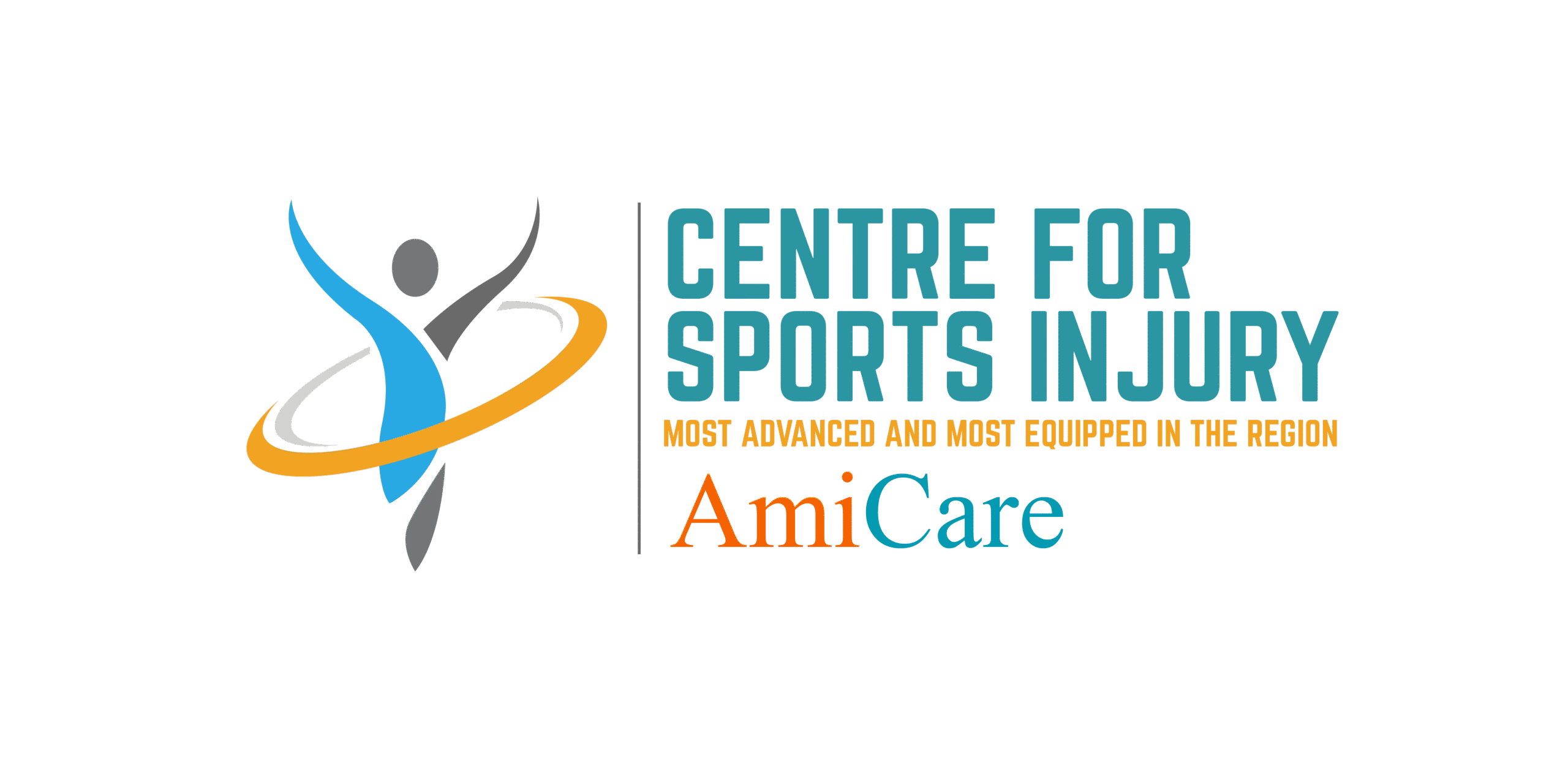Shin Splints Treatment
Best Sports Injury Centre for Shin Splints Treatment in Ghaziabad
Welcome to Amicare Hospital, the leading sports injury centre for shin splints treatment in Ghaziabad. If you’re an athlete, sports lover, or someone with leg pain from running, jumping, or daily walks, shin splints can make every step uncomfortable. This condition causes aching pain along the shin bone from inflammation or stress, often affecting runners, footballers, and active people.
Our team, led by Dr. Himanshu Gupta—an orthopedic expert with over 10 years of experience and advanced training in Germany, Singapore, and Japan—has treated over 1,000 leg and joint cases with great results. We use easy methods like physical therapy, custom support, and gentle options to help cricketers, footballers, runners, and active individuals ease shin splint pain and get back to their routines. Whether it’s from training on roads or sports like basketball, our personalized plans focus on quick relief and long-term leg health.
Ready to run without pain? Book your consultation today.

What is Shin Splints?
Shin splints are a common leg problem where the muscles, tendons, or bone covering along your shin get sore and inflamed, causing pain during running or walking. The shin splints meaning is overuse stress on the lower leg, often called medial tibial stress syndrome. It happens when the tissue around the shin bone gets irritated from repeated impact. In sports like cricket, football, or running, it’s frequent due to hard surfaces or sudden increases. Studies show it affects up to 20% of runners, making shin splints one of the most common sports injuries. Common sports injuries like shin splints can sideline you, but early care prevents worse problems.
Types of Shin Splints and Related Leg Injuries
Shin splints can vary, and knowing the types helps with the right fix. Here are common ones in sports and life:
- Medial Shin Splints: Pain along the inner shin from muscle pull, common in runners with flat feet.
- Anterior Shin Splints: Pain along the outer side of your shin caused by strained tendons, often seen in footballers who make sudden stops during games.
- Compartment Syndrome: Swelling or pressure in the leg muscles that feels similar to shin splints symptoms, causing pain and discomfort.
- Stress Fractures: Small cracks in the shin bone from overuse, related to shin splints.
- Tibial Periostitis: Inflammation of the bone covering, often from high-impact sports injuries.
Each type needs customized shin splint treatment to heal well.
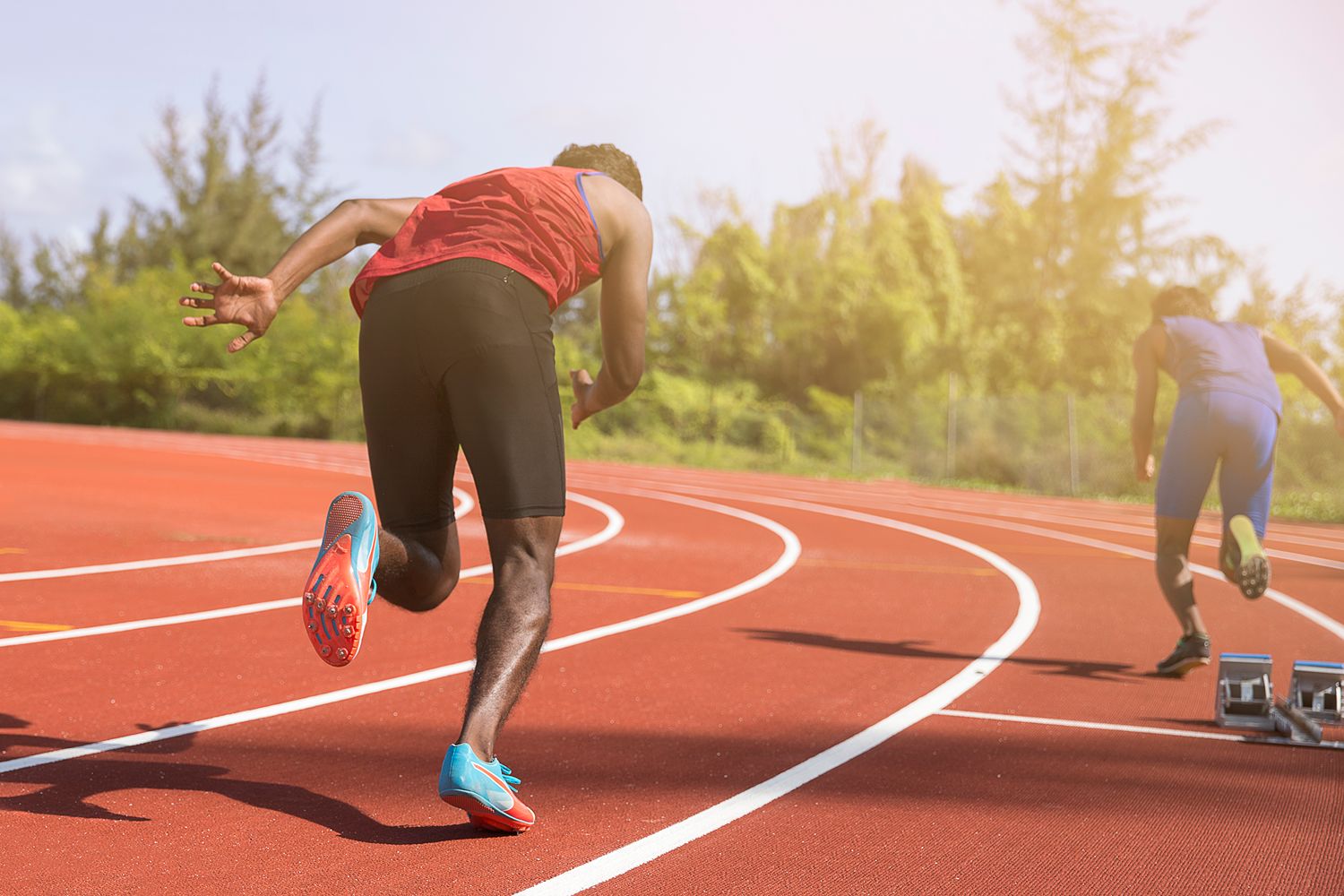
Notice the Signs Before It’s Serious
Catch signs early to fix fast. Common shin splint symptoms include:

Shin Pain
A dull or sharp ache along the shin bone, a main sign of shin splint pain.
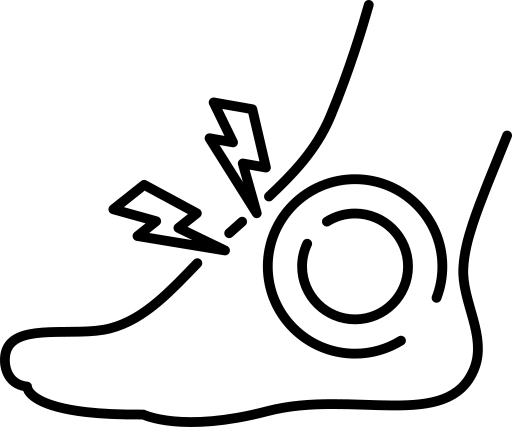
Swelling
Slight puffiness or swelling in the lower leg area.

Tenderness
Soreness when you press on the shin, making it sensitive to touch.
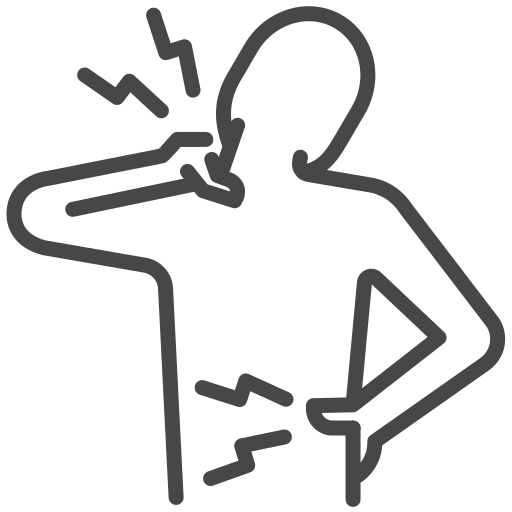
Pain During Activity
Pain that gets worse when running or jumping, common in sports injuries.

Stiffness
Difficulty bending or flexing the ankle, especially after resting.
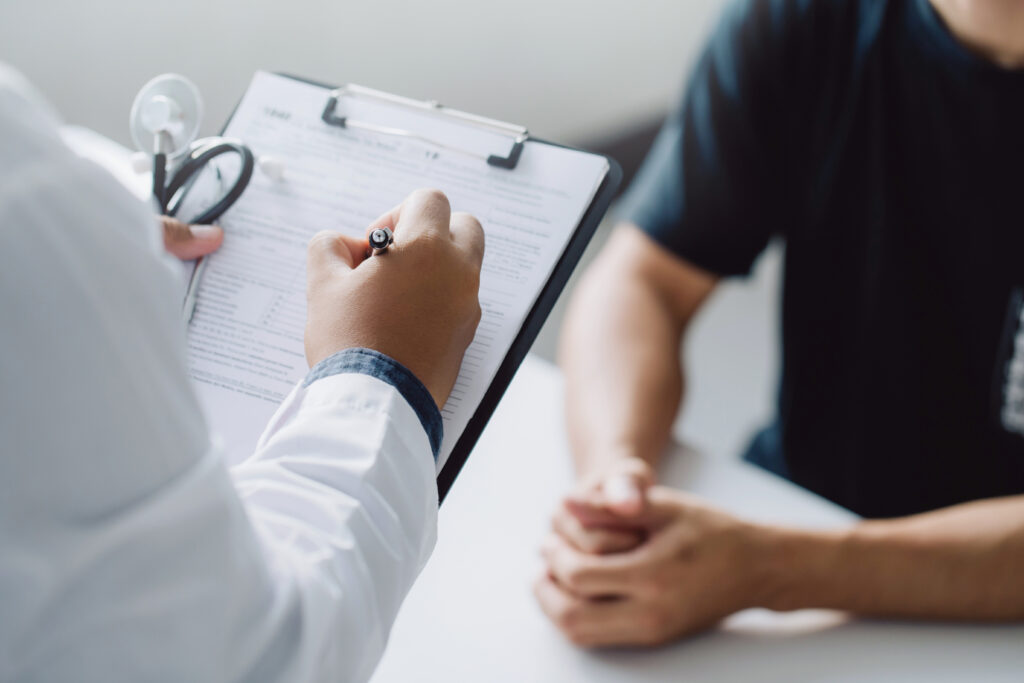
Common Causes of Shin Splints
Shin splints happen from too much stress on the lower leg. Main causes include:
- Sports Activities: Running or jumping on hard surfaces in football or basketball, leading to common sports injuries.
- Poor Footwear: Shoes without cushion cause shin splints, leading to bone strain.
- Overuse: Sudden increase in training, common in fitness lovers with shin pain after running.
- Flat Feet or High Arches: Bad foot structure increases risks, causing shin splint symptoms.
- Weak Muscles: Lack of leg strength from not doing shin exercises for shin splints.

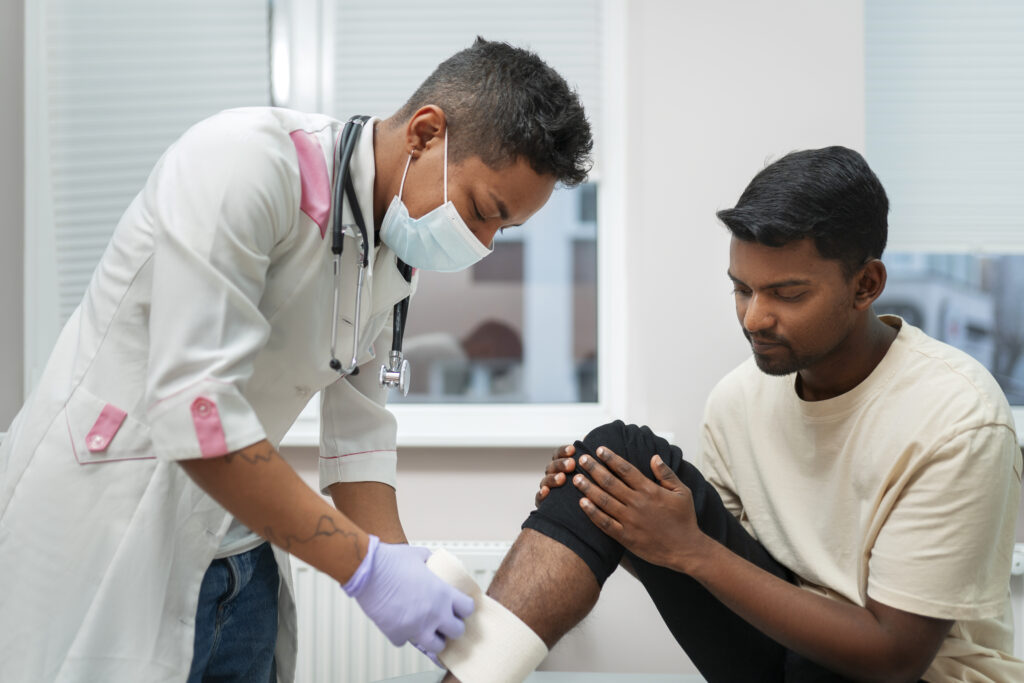
Diagnosis at Amicare
The right diagnosis is key to successful shin splints treatment in Ghaziabad at Amicare Hospital, where our team uses a step-by-step process to understand your injury and create a plan that fits your needs.
Dr. Gupta, an experienced orthopedic specialist, leads this diagnosis to identify the exact cause of your shin pain and determine the best way to heal..
- History Review: Talking about your sports or how the pain started, such as from running or jumping.
- Physical Exams: Pressing the shin for tenderness and testing strength to check for swelling or weakness.
- Imaging: X-rays for shin splints, X-ray to check the bone for fractures, and ultrasound for tissue inflammation to see soft tissue damage.
- Functional Test: Watching your run or walk to see the impact on your movement and daily activities.
We get it right for your plan, making sure your shin splints treatment is personalized and effective.
Feel leg pain or discomfort? Schedule your complete shin assessment now.
Risks of Delaying Treatment
Ignoring shin splints can lead to serious problems that make your leg pain worse and harder to fix, affecting your ability to enjoy sports or daily activities. As the best sports injury centre, Amicare Hospital recommends quick action to stop these risks and get you back to normal faster.
- Chronic Ache: Constant shin pain in daily moves that doesn’t go away and makes walking or running uncomfortable.
- Worse Inflammation: Leads to bone stress or fractures if the swelling and strain continue without care.
- Other Injuries: Strains causing knee or ankle issues from compensating for the shin pain.
- Limited Movement: Hard to play sports or walk normally, reducing your mobility over time.
Amicare’s quick help stops this for athletes, providing shin splints treatment in Ghaziabad to prevent these complications.
Shin Splints Treatment Options
Amicare has several choices for shin splints treatment in Ghaziabad, designed to fit your injury level and lifestyle, whether you’re an athlete or someone active in daily life. Our options include both surgical and non-surgical methods to relieve shin splint pain and get you moving again.
Surgical Treatment
For hard cases where non-surgical options aren’t enough, surgery can provide lasting relief from shin splints.
- Release Surgery: Cuts tight tissue to reduce pressure, done with minimally invasive techniques for faster healing.
- Bone Stress Fix: If there’s a fracture from severe stress, it’s fixed with small cuts to restore the bone.
- Details: Short procedure that lasts about 1 hour, with low risk (<1%) of complications, helping patients get back to activities soon. Most get relief soon after surgery, making it a reliable option for persistent shin splint pain.
Non-Surgical Treatment
For most cases, non-surgical methods are effective and help avoid surgery while managing shin splint symptoms.
- Physical Therapy: Shin exercises for shin splints to strengthen the legs and improve flexibility.
- Orthotics: Custom supports for shin splint support to cushion the foot and reduce strain.
- Injections: Reduce swelling with medications for quick relief in leg pain of athletes and faster recovery.
- Rest: Stop the activity causing the pain to allow the tissue to heal naturally.
Best for the early stages of shin splints, these options help athletes return to sports without long downtime.
CTA: Find the best recovery plan for your shin pain — book your appointment with Dr. Himanshu Gupta today.
Why Choose Shin Splints Surgery vs. Other Options?
Treatment | How It Works | Ideal For | Recovery Time | Benefits | Limitations |
Release Surgery | Cuts through tight tissue | Chronic pain | 6–12 weeks | Long relief, 95% success | Surgery, rest |
Shockwave Therapy | Waves reduce inflammation | Moderate ache | 4–6 weeks | No cuts, quick | May need sessions |
Physical Therapy | Exercises build strength | Early signs | 2–4 months | Builds strength | Takes time |
Orthotics | Supports arch | Daily discomfort | Immediate | Comfort, prevent | Not a cure alone |
Injections | Ease swelling | Severe pain | 1–2 weeks | Fast help | Short-term |
Not sure which treatment is right for you? Get expert guidance from Dr. Himanshu Gupta — book your consultation now..
Recovery After Shin Splints Treatment
Recovery after shin splints treatment differs based on the injury and treatment type, but at Amicare, we provide support to make it smooth and successful. Our plans focus on gradual steps to build strength and prevent re-injury.
Recovery Phases
- Weeks 1–2: Rest and ice the legs to reduce swelling and pain.
- Weeks 3–6: Light stretches and therapy to improve flexibility and movement.
- Months 2–3: Strength work to rebuild muscle and bone support.
- Months 4–6: Full activity return with confidence in your legs. Athlete-Specific Tips
Athlete-Specific Tips
- Cricketers: Shin stretches for fielding to keep the lower legs flexible during long games.
- Footballers: Supports for runs to cushion the shin during quick movements and stops.
- Runners: Slow build-up in training to avoid overloading the shin bone.
- Badminton: Leg exercises for jumps to strengthen the muscles and prevent strain.
These tips help complete your recovery and keep you active without shin splint pain.
CTA: Want a faster return to running or sports? Start your guided rehab now.
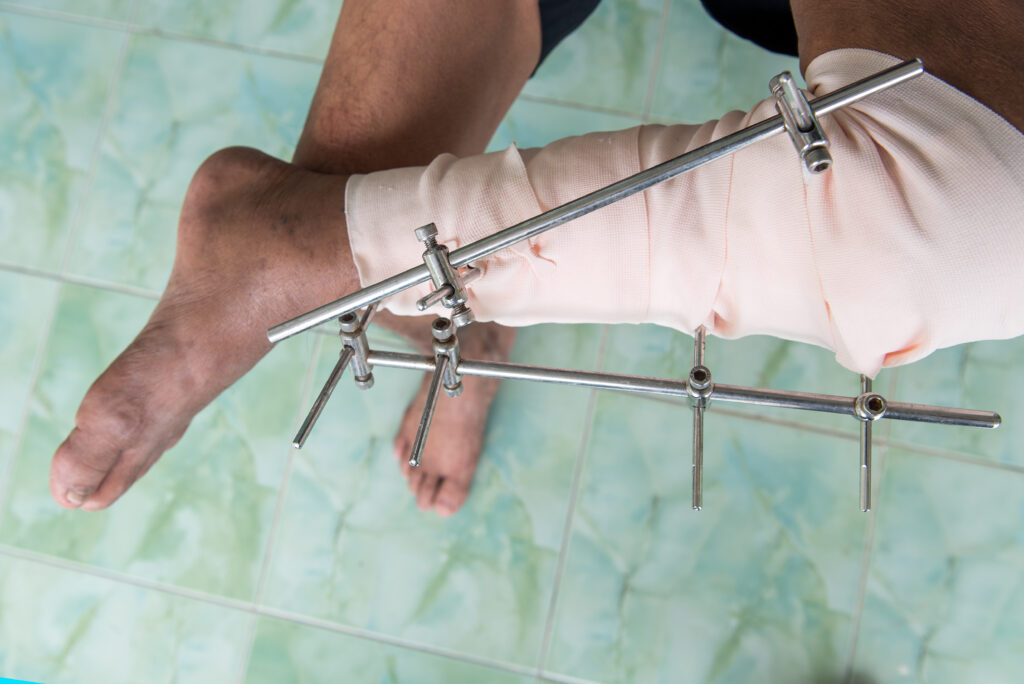
Why Choose Amicare and Dr. Himanshu Gupta for Shin Splints Treatment
Amicare is one of the top sports injury centres in Delhi NCR, with over 750+ satisfied patients who have recovered from issues like shin splints. Our reputation as the best sports injury centre comes from our focus on personalized care and successful outcomes. Dr. Himanshu Gupta the best sports injury doctor in Ghaziabad with 1,000+ cases treated and training from Germany, Singapore, and Japan, leads our team to provide reliable shin splints treatment in Ghaziabad. Our shockwave therapy, rehab programs, and expert guidance make us trusted for helping athletes and active people get back to their routines without pain.
Trusted by 750+ patients — choose Delhi NCR’s top sports injury centre today.
Cost of Shin Splints Treatment
The cost of shin splints treatment in Ghaziabad depends on the injury level and type of care, from non-surgical options to advanced tech.
- Non-Surgical: Therapy or supports for mild cases to relieve shin splint pain without high costs.
- Surgical: Procedures for severe cases where other methods haven’t worked.
- Factors: Number of sessions, use of tech like shockwave, and follow-up rehab.
Transparent pricing at Amicare ensures you get value without surprises, making us the best sports injury centre for affordable care.
Frequently Asked Question
Shin splints, also known as medial tibial stress syndrome, occur when the muscles, tendons, and tissue around the shin bone become irritated due to overuse or high-impact activity.
Shin splints symptoms include a dull or sharp ache along the shin bone, swelling, and tenderness that worsens with running or jumping, common in sports injuries. At Amicare Hospital, our shin splints treatment in Ghaziabad uses therapy and shin splints exercises to relieve these signs quickly.
The main cause of shin splints is sudden increases in training intensity, running on hard surfaces, wearing unsupportive shoes, or having flat feet or high arches.
Specific shin exercises for shin splints, such as calf raises, toe walks, and controlled ankle movements, strengthen the lower leg and reduce stress on the shin.
Shin splint stretches like wall leans, towel pulls, and calf stretches improve flexibility, release tension, and support faster healing.
The best way to cure shin splints is by resting the affected leg, using ice to reduce inflammation, wearing shin splint support such as braces or insoles, and following guided therapy with strengthening and stretching exercises.
